How Much Does Cooked Ground Beef Weigh


Beef Cuts Chart
all BBQ Lovers Should KNOW!
Beef is one of the most loved food items amongst meat lovers. Almost no one can say no to a juicy steak when offered. Now, there is a variety of cuts of meat, and it is quite useful to know each of them.
I am aware that most of the people do not know them. If you are one of them, this article is gonna be helpful to you.
Now, on a cow, there are eight primal cuts. Each cut gives different cuts of meats and several tastes. These are quite easy to remember, and with our help, you'll know just about everything about the cuts.
Let's get going.
The Eight Primal Cuts of Beef
In the world, there are about 100 different kinds of primal cuts. This depends on which part of the globe you are situated in. In this article, we would be discussing the chuck, ribs, loins, round, brisket, shank, short plate, and flank respectively.
Furthermore, we will provide you with elaborated information about how you can prepare these cuts and what kind of food you cook is best suited for them.
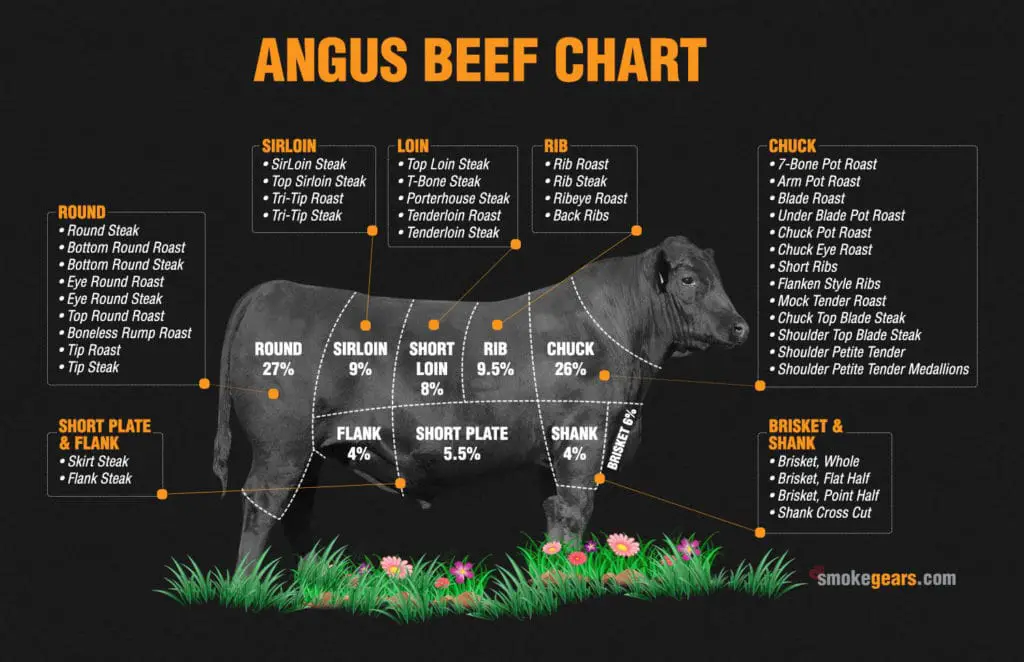
1. Chuck – Location & the Sub-Primal Cuts
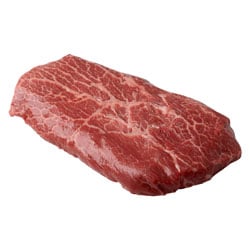
If you are wondering about serving some scrumptious roasted beef on the table for your Thanksgiving dinner, using parts from the chuck would be the right idea.
These are situated in the shoulder and the upper region of the cow which gets tons of movements. They are sometimes also referred to as shoulder cuts, like the shoulder steak.
The sub-primal cuts of it are Top Blade, Neck, Shoulder, Ground Beef, Chuck Steak, Bottom Blade, and Beef Ribs.
Breakdown of the Sub-Primal Cuts
The Ideal Way to Prepare and Cook the Sub-primal Parts:
• Blades
For blades, you will not have to do any additional preparation. Just straight up place it on top of the grill. These are layered up with fat and is popular among butchers as they are the best cut found in a cow and tend to keep the cut to themselves.
This part needs to be seasoned properly and should be grilled using direct heat.
• Shoulder and Neck
The shoulder and neck have a distinct odor to them which is why they need to be seasoned heavily. One can also rub it before braising or can do cooking under pressure.
You'll be able to enjoy the shoulder and neck the most when it is cooked for a long period inside an oven with the addition of a liquid. Since it is going to be inside the oven for quite a reasonable amount of time, and the temperature should be kept at low.
• Chuck Filet
A meat mallet has to be used on the chuck filet and chuck steak to ensure it's tenderized. This allows the meat to be soft and not too chewy. These are then beaten up and layered with raw egg. Usually, the extra portions of the meat are converted into ground beef.
• Beef Ribs
For preparation, you would need to boil the beef ribs in a stove for about an hour. You could also grill it to make it softer by breaking the product up. To add more flavor, just marinade the ribs.
Then coat it with a wet or dry rub and smoke it over a smoker with indirect heat. This could take a long time, so keep the temperature low.
Read more about differences between Chuck Roast and Chuck Steak here.
What Type of Food Should Be Made with These and What Sort of Grill Should be Used?
Cost:
Chucks are the cheapest part of a cow except for the blade. So, if you want to cook a good steak for your family and yourself but your budget is prohibiting you from doing so, now you know what to get.
Check the comparison of Chuck Roast vs Brisket here.
2. Ribs – Location & its Sub-Primal Cuts
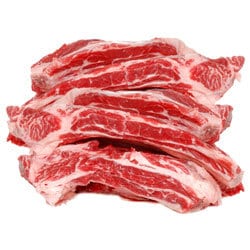
The mouth-watering sight of saucy ribs is pleasing to the eye. This part of a cow can be found towards the center of the organism's back. A big amount of marbling fat content is present here, which makes it extremely flavourful.
Prime Rib, Back Ribs, Rib Steak, Rib-Eye Steak, and Short Ribs are the sub-primal cuts of this portion.
Breakdown of the Sub-Primal Parts
The Ideal Way to Prepare and Cook the Sub-primal Parts
• Prime Ribs:
To cook some delicious prime ribs, seasoning and dry rub of spices must be done before taking it to the grill. You must cook this at a high temperature for a minimal length of time to have a soft and pink center and crispy on the outside.
If you wish to have a well-done steak, then keep it in the grill for a few more minutes.
• Back Ribs:
You would require to add juices and other seasonings to back ribs right before cooking it. After that, you have to "slow" cook the ribs on an offset smoker in low heat till it starts detaching itself from the bone. In the end, drizzle on some sauce you would like to add, and you're done.
• Rib-Eye Steaks:
No preparation has to be made to cook rib-eye steaks. You would need nothing more than salt and pepper to initiate. Flip it over a charcoal grill to give a smoky taste and add your desired seasoning to the part that is being cooked.
• Short Ribs:
Make sure you make your butcher cut the short ribs before you take it home because a specific length is required. With that being said, they also have to detach from one another, and a layer of corn-starch or flour has to be coated around them.
What Type of Food Should Be Made with These and What Sort of Grill Should be Used?
Cost:
More or less all the sub-primal portions of ribs are towards the expensive side of the spectrum. Steaks from these cuts are costly but known to be among the best. If you are a steak lover and are down to loosen up your wallet, then you will love this!
3. Loins – Location & Its Sub-Primal Cuts
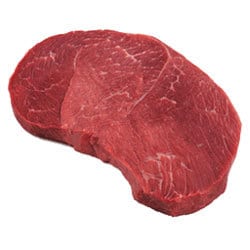
Loins are situated at the lower back of a cow and pass along the spinal cord. They are known as an almost inactive muscle. Juicy steaks can be prepared using this as it is very tender and soft.
The sub-primal parts include Club Steak, Filet Mignon, New York Strip, Sirloin Steak, Tri-Tip, T-bone Steak, and Chateaubriand.
Breakdown of the Sub-Primal Cuts
The Ideal Way to Prepare and Cook the Sub-primal Parts
• New York Strips and Sirloin Steaks
They do not need much preparation other than adding some seasoning to them. The best you can get from these is when they are made in the right temperature, medium rare is the most preferred one.
First, you need to add salt and pepper before you put the cuts on the grill. Remember, single steaks are better to cook rather than using an entire strip at once. If a whole strip is used, a uniform cook is hard to achieve due to the structure of the meat and fat.
• Chateaubriand, Tri-Tip, and Filet Mignon
They are very soft, and a lot of attention has to be put while preparing them. First and foremost, take out any cartilage, tendons, or silver skin from the meat before grilling.
If you have chosen a thick portion, be sure to butterfly the steak to have a better grasp at even cooking. Then add your desired seasoning, or you can use salt and pepper to get the job done.
A dry rub is utilized while the steak is inside the oven. It is usually cooked for a short amount of time in high temperatures to get a blast of charred flavor towards the exterior. After it's taken out of the oven, thinly slice the pieces and serve it on the table.
• Club Steaks, T-bones, and Porterhouse
They don't require much preparation. You need to season it when you are initiating to cook.
What Type of Food Should Be Made with These and What Sort of Grill Should be Used?
Cost:
Prices of all the sub-primal cuts of loins are sky-high. The big price tag is mainly because of the flavor these possess and how tender they are. Filet Mignon is the most expensive cut of the loins. You won't regret buying these though if you like excellent steaks.
4. Round – Location & Its Sub-Primal Cuts
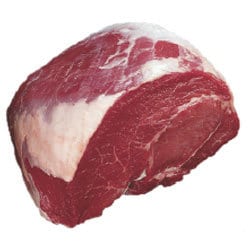
The round is situated near the buttocks of the cow. This cut is tougher than most of the other parts as it is leaner and consists of a small quantity of fat. Top Round, Sirloin Tip, Eye of the Round, Bottom Round and Heel of the Round are the sub-primal cuts.
Breakdown of the Sub-Primal Parts:
All of these smaller cuts weigh the same. They are chopped into big roasts which weight about 3 to 10 pounds. These have an average fat content of 12 percent and does not even contain 10 grams of it per serving. This is the reason why they are adamant.
The Ideal Way to Prepare and Cook the Sub-primal Parts:
You will have to cut these parts into smaller pieces if you intend to make a jerky. These thin slices of beef have to be seasoned heavily, and you can choose your desired ones depending on what flavor you want to bring about.
The portion of meat has to be drowned or injected with a pool of tasty juices if you opt for braising.
Furthermore, the round has to be simmered in low temperatures. Since this cut is very lean, additional fat such as eggs has to be added to ensure that the meat does not start to become dry.
What Type of Food Should Be Made with These and What Sort of Grill Should be Used?
The best Italian beef sandwiches and Philly cheese steaks can be prepared using round of a cow. Marinate, tenderize, and cook it slowly in a conventional oven, and you'll be all set for a fantastic meal. Rounds would not make the best steaks because of it being lean and hard.
Cost:
Since these are not marbled with fat and are more rigorous than the other primal cuts, they are very cheap. If you are in a tight budget and are looking for affordable options, this might be the one for you.
5. Brisket – Location & Its Sub-Primal Cuts
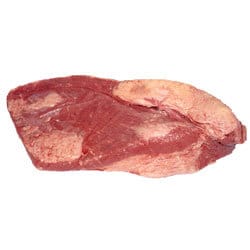
It is found in the lower chest region or towards the breast of the cow. This portion of the organism is known to be one of the most active groups. The only conclusion that can be drawn from it would be that the brisket contains less fat so it is lean and tight. It does, although, has flavor etched into it.
The sub-primal parts are the Brisket Point and the Brisket Plate.
Breakdown of the Sub-Primal Parts
Both of the weights of the cuts around 3 to 5 pounds. The thickness varies from 2 to 3 inches. Brisket is said to be the leanest cut and has only 3% of fat within itself.
The Ideal Way to Prepare and Cook the Sub-primal Parts
The time duration of 4 hours is the minimum requirement to cook a tasty brisket. This needs to be strongly marinated or brine to bring out the flavors. You will need to lather the entire cut with seasonings or dry pepper rubs filled with a big array of spices.
By this method, the crust becomes dark in color and very crispy, and the combination is referred to as "bark."
Some people remove the fat cap off of the brisket. But it should remain there as it only helps the meat to have moisture from the fat content present. Overcooking and drying of the cut are prevented.
You can cook briskets in many methods such as braising, smoking, stewing, and slow cooking.
What Type of Food Should Be Made with These and What Sort of Grill Should be Used?
When you have a lot of time to spare, you should opt to cook brisket. Since brisket is very lean and tight, it requires plenty of grilling time to in low temperatures so that the risk of overcooking is eliminated.
Since the cut needs slow cooking in low temperatures, an indirect smoker is a right place to grill the brisket. When this grill is used, the temperature can easily be controlled. The best smoker thermometer is essential to monitor the temperature of the item.
As long as the temperature is lower than 200 degrees, a conventional oven can also be used.
Cost:
Briskets are moderately priced. They are not too expensive, neither they are too cheap. This can be used on a day to day basis as this won't create a large dent in your pocket, and you can enjoy the flavourful meal.
Check the comparison of brisket vs tri-tip here.
6. Shank - Location & Its Sub-Primal Cuts
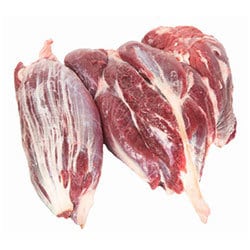
It is present in the chest region or the lower part of the abdomen. The shank is used by the cow a lot which means that the fat content is considerably low and that it is a lean muscle. Hind Shank, Fore Shank, and Ground beef are the sub-primal cuts off the portion.
Breakdown of the Sub-Primal Parts
If the parts are to be roasted, then they should weigh approximately between 3 to 5 pounds. If ground beef is chosen, then you have to chop them up into cubes of 1 inch for stewing. Since it is classified as an extra-lean cut, the Hind and Fore Shanks have 7% of fat.
The Ideal Way to Prepare and Cook the Sub-primal Parts
A mallet or near tenderizing seasoning must be utilized to break down the portion. If a marinade is used, it will break the meat and will also increase the flavor of the tough beef cut.
This requires slow cooking in minimum heat to become prepared. You could also place it inside the over at a very high temperature to chop down the structure of the meat.
What Type of Food Should Be Made with These and What Sort of Grill Should be Used?
Shank is ideal when it is chopped up into tiny cubes for a beef stew or to prepare a pot roast. The low-fat content makes it perfect for converting the leftovers into lean ground beef. This, however, is done very rarely.
For ground beef, a direct heat grill is the perfect stoves. And, for stews and or roasts crackpots and conventional ovens should be used.
Cost:
Shanks are extremely affordable. If you pay more than three and a half dollars for them, then chances you are being fooled by the butcher. Because of its low price, it is accessible to many people and can be used every day. So more delicious stews and pot roasts can be made with a small budget!
7. Short Plate – Location & Its Sub-Primal Cuts
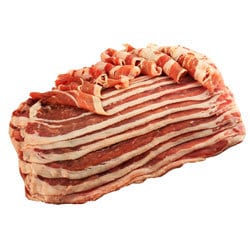
Short plates are situated right beneath the rib cut and the center of the belly of a cow. In a few countries, this cut is thought to be an extension of the brisket. Although the meat has a high amount of fat, it is very tough comparatively.
Brisket, Ground beef, Hangar Steak, and Skirt Steak are known to be the sub-primal cuts.
Breakdown of the Sub-Primal Parts
The Ideal Way to Prepare and Cook the Sub-primal Parts
• Skirt Steaks:
The skirt steak will taste better if marinated in a strong acidic condition for a minimum duration of 12 hours. There are plenty of fibers in this portion, so the acid present in the marinade would allow the beef to loosen up quicker.
After this has been done, you can either use this marinade and proceed to cook, or you can wash it off and layer the cut with a dry rub of spices for new flavors.
The beef should be sliced against the grain of the grill for added softness to the end product.
• Hanger Steaks:
Sprinkle salt and pepper all over the hangar steak and take it to the grill. This does not need any additional seasoning, and the cooking method is similar to the methods used for other types of steak. A medium-rare steak is enjoyed the most using this cut.
What Type of Food Should Be Made with These and What Sort of Grill Should be Used?
Cost:
Ground beef will always be very affordable. Skirt steaks are not very expensive but are not as cheap as ground beef. The one with a big price tag is the Hangar Steak. This is due to the high demand and low supply of the meat, all thanks to the butchers.
So, if you ever find the latter in the market, grasp on it as quickly as possible as they are incredibly delicious.
8. Flank – Location & Its Sub-Primal Cuts
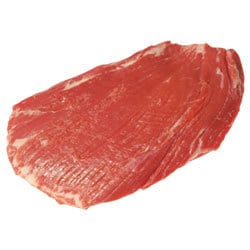
The lower side of the belly of a cow has the muscle flank. A lot of fiber is incorporated in this section of the mammal. The sub-primal parts are Ground Beef, London Broil, and Flank Steak.
Breakdown of the Sub-Primal Parts
Flank steak is only a few centimeters thickets than the skirt steak and is generally very long. It weighs between 2 to 4 pounds. All the sub-primal cut of the flank contains fat less than 10 grams and has an average of 11% of fat. Therefore, it can be denoted that these are lean meat.
The Ideal Way to Prepare and Cook the Sub-primal Parts
Soften the flank steak with the help of a meat mallet or a meat tenderized seasoning just before you start placing them on top of the grill. It is advised to marinate the steak under strongly acidic conditions to loosen up the fiber-filled meat. Acidic fruit juice from lime and lemon are used to carry this process out.
The beef then should be stored in the freezer overnight for at least 10 hours or use a dry rub full of spices and keep it on for an extended period. Cut these up against the grill while they are being cooked to soften the meat further.
What Type of Food Should Be Made with These and What Sort of Grill Should be Used?
Flanks are perfect for pizza toppings, salads, fajitas, and stir-fries. You could use either a direct heat grill or an open flame grill for cooking these food items.
Cost:
All the sub-primal part of the flank is priced quite averagely. Therefore, it becomes eligible for people who are in a tight budget or who do not pour tons of money on near. Either way, if you get flanks, you'll have some freshly made tasty food on your plate in no time.
Final Words:
Now that we have almost come to an end, you must know that there is no "best cut" in a cow. It comes down to one's preferences and what type of meal they want to feast on. One might be appeased with a medium-rare while the next person finds everything unacceptable other than a well-done steak.
Just remember the appropriate temperature needed to cook each of the cuts mentioned above as it plays a crucial role in how your food will taste.
You do not have to put much thought into these cuts as your butcher would chop it up into sub-primal parts for you. It is highly unlikely to find an uncut primal part in your average supermarket.
So, what are you waiting for? Get your smoker out and start grilling some delicious steaks for you and your family. If you face any trouble, you will always have this article to refer back to.
Happy Grilling!
Amazon Disclosure: SMOKEGEARS.COM is a participant in the Amazon Services LLC Associates Program, an affiliate advertising program designed to provide a means for sites to earn advertising fees by linking to Amazon.com. Amazon and the Amazon logo are trademarks of Amazon.com, Inc., or its affiliates. Additionally, smokegears.com participates in various other affiliate programs, and we sometimes get a commission through purchases made through our links. Smoke Gears also use AdSense. We use Ezoic to provide personalization and analytic services on this website, as such Ezoic's privacy policy is in effect and can be reviewed here. For questions about this website, please contact us viaCONTACT FORM

Source: https://smokegears.com/beef-cuts-chart/
0 Response to "How Much Does Cooked Ground Beef Weigh"
Post a Comment